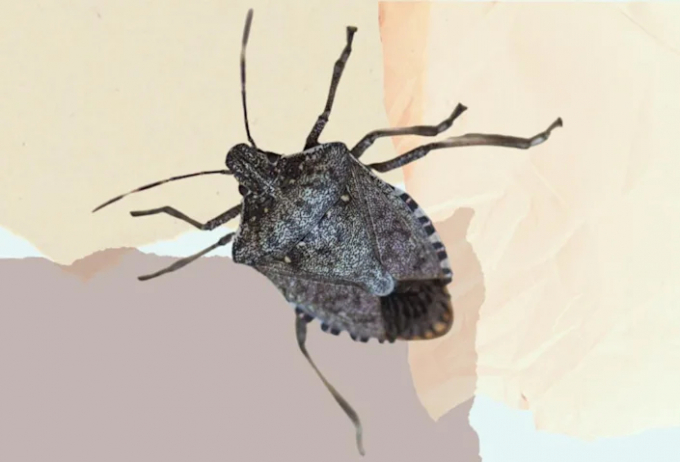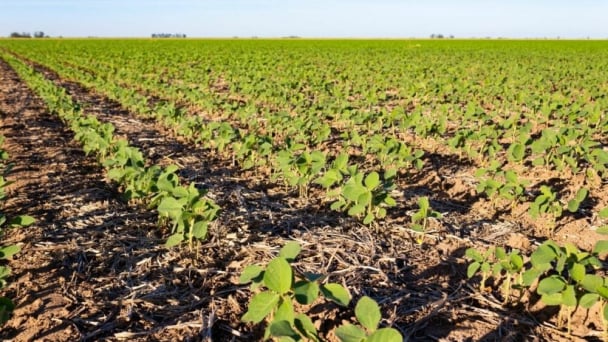May 17, 2025 | 12:05 GMT +7
May 17, 2025 | 12:05 GMT +7
Hotline: 0913.378.918
May 17, 2025 | 12:05 GMT +7
Hotline: 0913.378.918

Meet the invasive species trying to get in your home this fall. Photo: TNY
Experts have warned that the increase in species of the stink bug could become “problematic” for crops and gardens after one was found in Surrey.
The insect receives its name from the foul smell it releases when threatened, and can grow to up to 1.7cm in size.
One of the bugs was caught by a pheromone trap at the Royal Horticultural Society Garden Wisley, but there is now a fear that there could be a rise in the population of the insects.
Typically, stink bugs feast on fruit and vegetables in the summer. They are known to pierce the outside of produce and suck out the juice causing rot. Stink bugs can get in products made from fruit such as wine, and contaminate the flavour, giving a smell of stink bugs in the drink.
In the autumn and winter stink bugs are known to invade houses and cause stains to curtains and carpets. The brown marmorated stink bug, considered an invasive species, is known to cluster around window frames in large numbers and leave droppings that can create unpleasant-smelling oils when attempting to clean.
Invasive species are said to cost the UK economy more than £1.8 billion a year.
Dr Glen Powell, head of plant health at RHS Garden Wisley said global warming has exacerbated the spread and growing prevalence of stink bugs in the UK.
“While there is currently no evidence of breeding we would expect the stink bug to grow in prevalence and it may become problematic in gardens during summer and homes in the winter months within five-10years,” Dr Powell said.
“The stink bug isn’t the first to land on our shores and won’t be the last, and understanding how we can best manage it is the next challenge for the research community supporting gardeners and commercial growers of fruit and vegetables.”
The pheromone trap involves releasing smells that are familiar to the bug to lure them on to a sticky panel. It’s part of a project being led by The National Institute of Agricultural Botany (NIAB) East Malling and Defra.
One of the first stink bugs was caught in The National History Museum’s wildlife garden by museum scientists. Museum entomologist Max Barclay said: “The trapping programme is more useful as a monitoring device than a controlling one...Trapping is a good way of detecting the presence of the species which might influence your other behaviour, like bug proofing your house, or growing a different that is less susceptible to the pest.”
There are more than 40 species of stink bugs (also known as shield bugs) already present in the UK, however, they pose no threat to plant health and are not considered pests.
A Defra spokesperson said: “The brown marmorated stink bug is not a significant threat but as with all pests and diseases we will continue to monitor any threats closely.”
It's fall, and that means migration. Birds are headed south. Chipmunks and squirrels are out in full force, gathering nuts for the winter. As temperatures drop, insects are looking for warm places, like your home, to hunker down.
Some of these bugs - like spiders and centipedes - likely won't come as a surprise. But others may look new to you.
Take, for example, the brown marmorated stink bug. Measuring about 2 cm in length and about the same width, with a flat, brown abdomen, it is native to Asia, and it's here in North America because it was accidentally introduced to the U.S. in 1998.
"They were first detected in Ontario in 2010," Cynthia Scott-Dupree, Ph.D., a professor of sustainable pest management at the University of Guelph, tells The Weather Network.
"It has since become established in Ontario, Quebec, and British Columbia."
While we're focusing on this particular invasive stink bug species, it should be noted there are a number of native stink bugs present in Ontario. "Some are pests, like the brown marmorated stink bug, and others are what we call beneficial," Dr. Scott-Dupree says.
The beneficial stink bugs work like a natural biological control, hunting and consuming pest insects. The pest insects, on the other hand, can cause significant damage to crops. More on that later.
Stink bugs aren't toxic, but they are armed with a defense mechanism that isn't too hard to figure out, given their name.
When disturbed they release a foul-smelling chemical, but you typically won't pick it up unless there's a group of them.
You'll likely see brown marmorated stink bugs congregating on brick surfaces on warm, autumn days, attempting to absorb some of the heat. They're also looking for a way to get inside.
If they do find their way indoors, here's the good news: They aren't likely to cause any structural damage, and they don't bite, nor do they sting. But when you zoom out, on a nationwide scale, they come with their fair share of problems.
DAMAGE TO AGRICULTURE
The marmorated brown stink bug feeds on about 170 species of plants, namely agricultural crops, posing a risk to farmers. In 2010, they decimated apple crops in the Mid-Atlantic United States, resulting in $37 million (U.S.) in damages.
"Their numbers are increasing," Dr. Scott-Dupree says. "So far, in Canada, the damage has not been [significant]."
"So far," is the takeaway here, though. Right now, marmorated brown stink bugs are reproducing at a rate of about two generations per year. But if the weather continues to get warmer and the seasons get longer, there is potential for a third generation, which means population numbers will steadily increase in the fall.
"They like to attack apple crops when they're just about ready for harvest," Dr. Scott-Dupree says.
"So, if we're getting higher numbers of them as we head into fall, then there's a bigger potential impact these insects could have in the agricultural sector."
Efforts to control stink bugs are ongoing, but you can make your home less appealing to them by:
-Cleaning and vacuuming regularly.
-Removing crumbs from counters and the floor.
-Storing food in air-tight containers.
-Sealing cracks and openings in windows, doors, and walls.
-Fixing leaky faucets and cracks in your plumbing.
-Removing moisture with a de-humidifier.
(BBC, TNY)

(VAN) Fourth most important food crop in peril as Latin America and Caribbean suffer from slow-onset climate disaster.

(VAN) Shifting market dynamics and the noise around new legislation has propelled Trouw Nutrition’s research around early life nutrition in poultry. Today, it continues to be a key area of research.

(VAN) India is concerned about its food security and the livelihoods of its farmers if more US food imports are allowed.

(VAN) FAO's Director-General emphasises the need to work together to transform agrifood systems.

(VAN) Europe is facing its worst outbreak of foot-and-mouth since the start of the century.

(VAN) The central authorities, in early April, released a 10-year plan for rural vitalization.

(VAN) Viterra marked a significant milestone in its carbon measurement program in Argentina, called Ígaris, reaching 1 million soybean hectares measured.